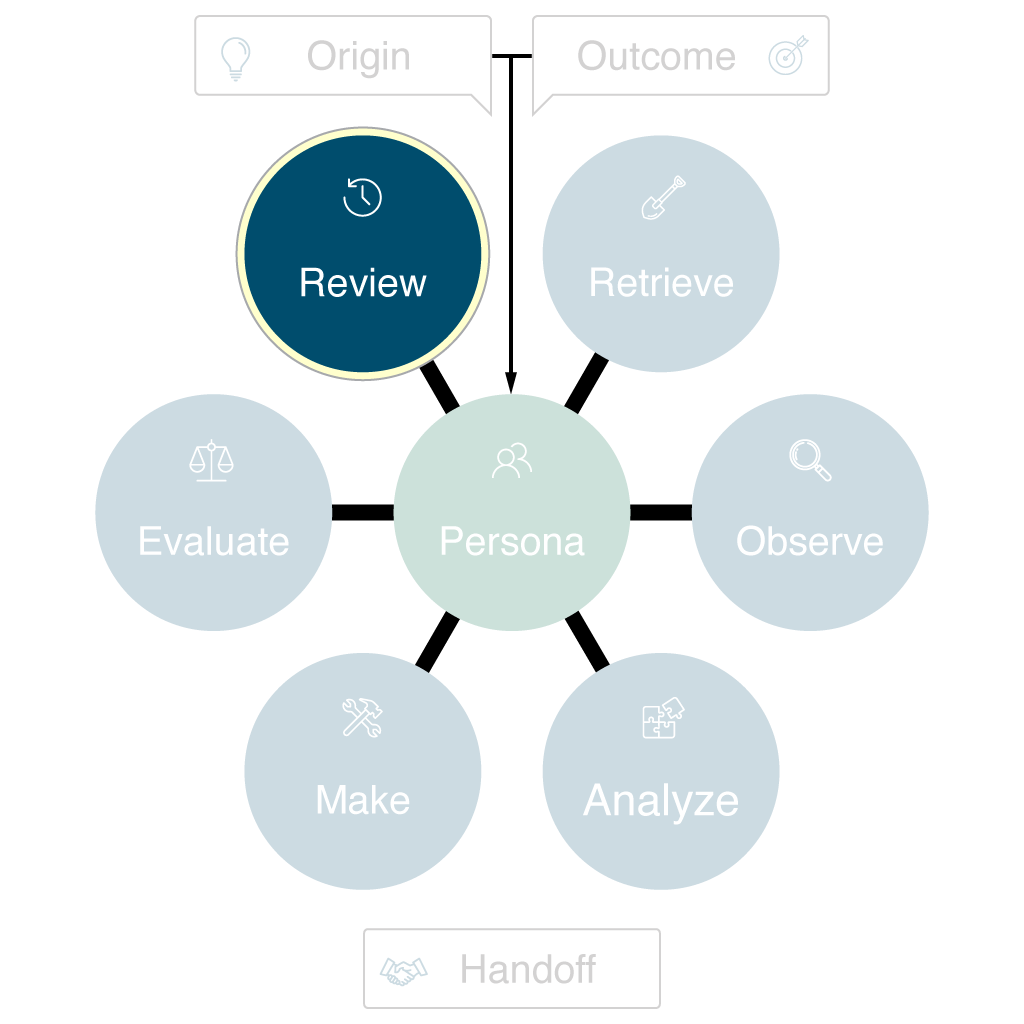
The Review phase is an internal team activity focused on reflecting, learning, and improving during the transition to handing off work to others. This is the team’s primary opportunity to candidly evaluate the quality of collaboration, execution, and communication, driving cross-functional health and continuous improvement. A strong Review phase strengthens trust, breaks down silos, and helps teams build the practices needed for long-term success.
Purpose
- Reflect on what went well and what could be improved, across process, execution, and cross-team dynamics
- Document lessons learned, successes, and failures in a way that benefits future teams—not just the current one
- Identify actionable changes for future cycles, improving both project outcomes and collaborative health
Key Questions
- What worked well in this cycle or project, especially across functions or teams?
- What were the biggest challenges, and how were they addressed (or not addressed)?
- What lessons should the team apply to future work, and how will these be shared with others?
- Were there process gaps, communication issues, or missed opportunities for alignment?
- How can we improve our tools, workflows, or collaboration for next time?
- What feedback do team members or stakeholders have for each other—honestly and constructively?
- Are outcomes, documentation, and next steps clear for everyone, including teams we hand off to?
Read the research report on the importance of reflection and retrospectives. [Document Link – PDF]
Case Study Example: Dog Park Finder App (Fetch Spotter)
Applying the Review Phase:
What worked well in this cycle or project?
- Rapid collaboration between Product, Engineering, and Marketing led to an on-time launch
- Early user engagement was high and feedback was mostly positive
- Effective outreach to city partners improved access to official park data
What were the biggest challenges, and how were they addressed?
- Some miscommunication about requirements led to late feature changes; weekly check-ins were added to reduce this in the next cycle
- Data integration with certain city systems was slower than expected, requiring manual updates initially
- Several early risks (city data access, competition) were managed through ongoing communication and weekly status reviews
What lessons should the team apply to future work?
- Align on MVP features earlier to minimize last-minute changes
- Assign a single data integration owner for future external partnerships
Were there process gaps, communication issues, or missed opportunities?
- Feedback loop between Customer Support and Product was sometimes slow—adding a standing agenda item to sprint reviews
- Missed chance to run a public beta; next launch will include broader user testing
How can we improve tools, workflows, or collaboration next time?
- Upgrade to a shared roadmap tool for better cross-team visibility
- Shorten the sprint cycle for faster course correction
What feedback do team members or stakeholders have for each other?
- Marketing praised Engineering for flexibility
- Customer Support requested earlier involvement in feature planning
- Product Owner requested clearer documentation from all teams
Are outcomes, documentation, and next steps clear for everyone?
- Handoff plan documented
- Debrief meeting scheduled
| Team / Function | Start | Stop | Continue |
|---|---|---|---|
| Product | Schedule early MVP alignment sessions | Last-minute feature requests | Weekly status syncs with all stakeholders |
| Engineering | Pair programming for tricky integrations | Manual data imports from city partners | Regular code reviews and shared documentation |
| Marketing | Early involvement in product feature planning | Relying solely on digital campaigns for launch | Coordinated launch events with city partners |
| Customer Support | Proactive outreach to beta users | Waiting for users to report issues | Collecting user feedback and reporting pain points |
| All Teams | Cross-functional retros at end of each cycle | Siloed decision-making | Open, honest feedback in sprint reviews |
| Leadership | Sharing strategic updates more broadly | Assuming all teams have full project context | Celebrating successes and lessons learned together |
Start, Stop, Continue Retrospective Table
This table captures actionable retrospective feedback from each function. Review and update collaboratively after each cycle for best results.

